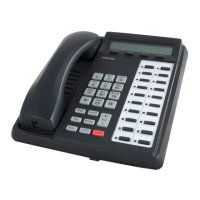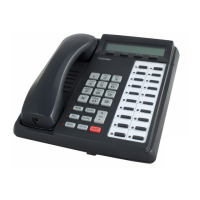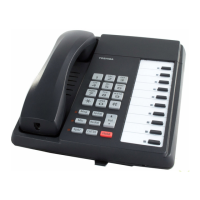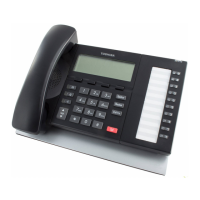
Do you have a question about the Toshiba DKT3210-SD - Digital Phone - Charcoal and is the answer not in the manual?
Details the structure of the user guide, outlining the content of each chapter and section.
Provides instructions on navigating the manual, explaining conventions and symbols used.
Lists supplementary guides and resources for further information on the Strata CTX system.
Introduces the DKT3000 series models, their buttons, and LCD capabilities.
Explains the function of fixed dial pad buttons and programmable flexible buttons.
Details the information displayed on the LCD and its interaction with control buttons.
Lists and describes the various models within the DKT2000 and DKT2500 series.
Provides an overview of DKT3500 series models and highlights key differences.
Advises users to verify system features and understand basic operations before use.
Details the three primary methods for originating a call: Hot Dialling, Spkr, and Handset.
Explains how to answer incoming calls using the handset, speaker, or handsfree.
Describes how to use the Msg LED and LCD to see and retrieve messages.
Provides instructions for transferring calls to other extensions or voice mail.
Explains how to set up and manage conference calls with multiple participants.
Details how to adjust handset, speaker, ring tone, and LCD contrast.
Explains how to navigate and interpret information displayed on the LCD.
Defines the various Soft Key prompts and their functions for advanced operations.
Details the use of Account Codes for billing, tracking, and line restriction.
Covers system and station call forwarding, categories, and specific settings.
Explains the feature for temporarily holding calls in a location other than the telephone.
Describes how to pick up calls ringing other stations or calls placed on hold.
Explains how to handle incoming calls when your station is busy.
Guides on activating/deactivating DND mode and its impact on incoming calls.
Details transferring calls directly to a voice mailbox without ringing the extension.
Guides on recording conversations and storing them in voice mailboxes.
Describes accessing and navigating directory and speed dial lists on the LCD.
Guides on entering characters using the dial pad for name searches in directories.
Explains how users can customize their telephones by programming Flexible Buttons.
Provides a step-by-step guide to programming or reassigning functions to Flexible Buttons.
Describes using One Touch buttons for storing features or dialled numbers.
Lists feature access codes used to activate specific telephone functions.
Explains the meaning of LED colors and flashing patterns for call status indication.
Introduces the DADM for adding line/feature buttons to digital telephones.
Introduces the DSS console for providing additional line/feature buttons.
Guides on calling and transferring calls to stations using DSS consoles or DADMs.
Details the Night Transfer button for setting system modes like Day, Day2, or Night.
Explains matching station extensions with Centrex line extension numbers.
Describes accessing Centrex features via pre-programmed Flexible Buttons.
Provides definitions for programmable buttons and their corresponding features.
Declares compliance with EEC directives and safety standards like EN60950.
Details the product's compliance with EEC EMC directives and relevant generic standards.
Declares compliance with EC Directive 1999/5/EC for network services connection.
Lists characteristics of tones and signals used in the Strata CTX system.











